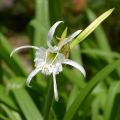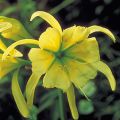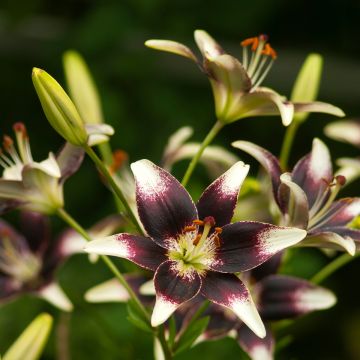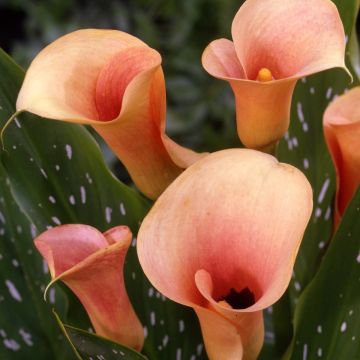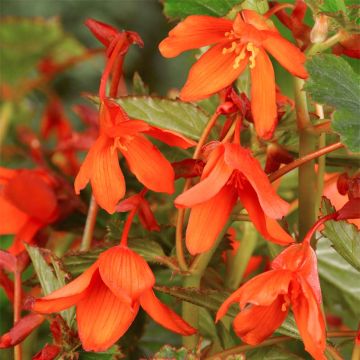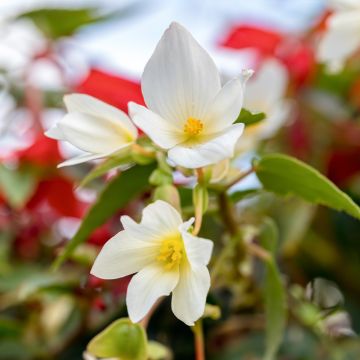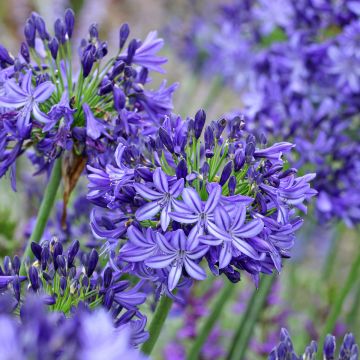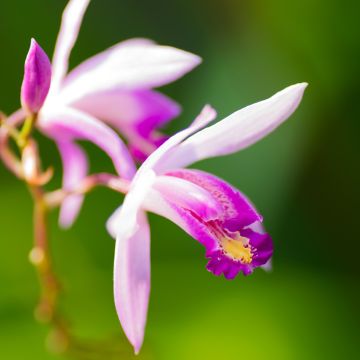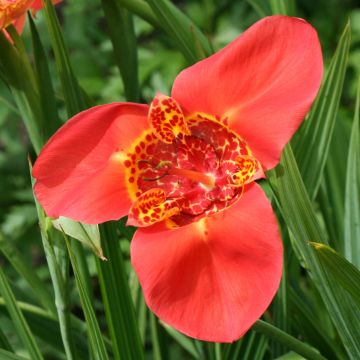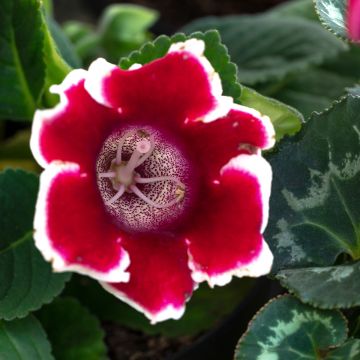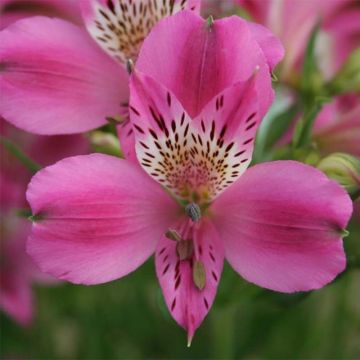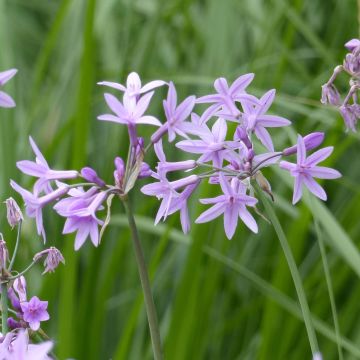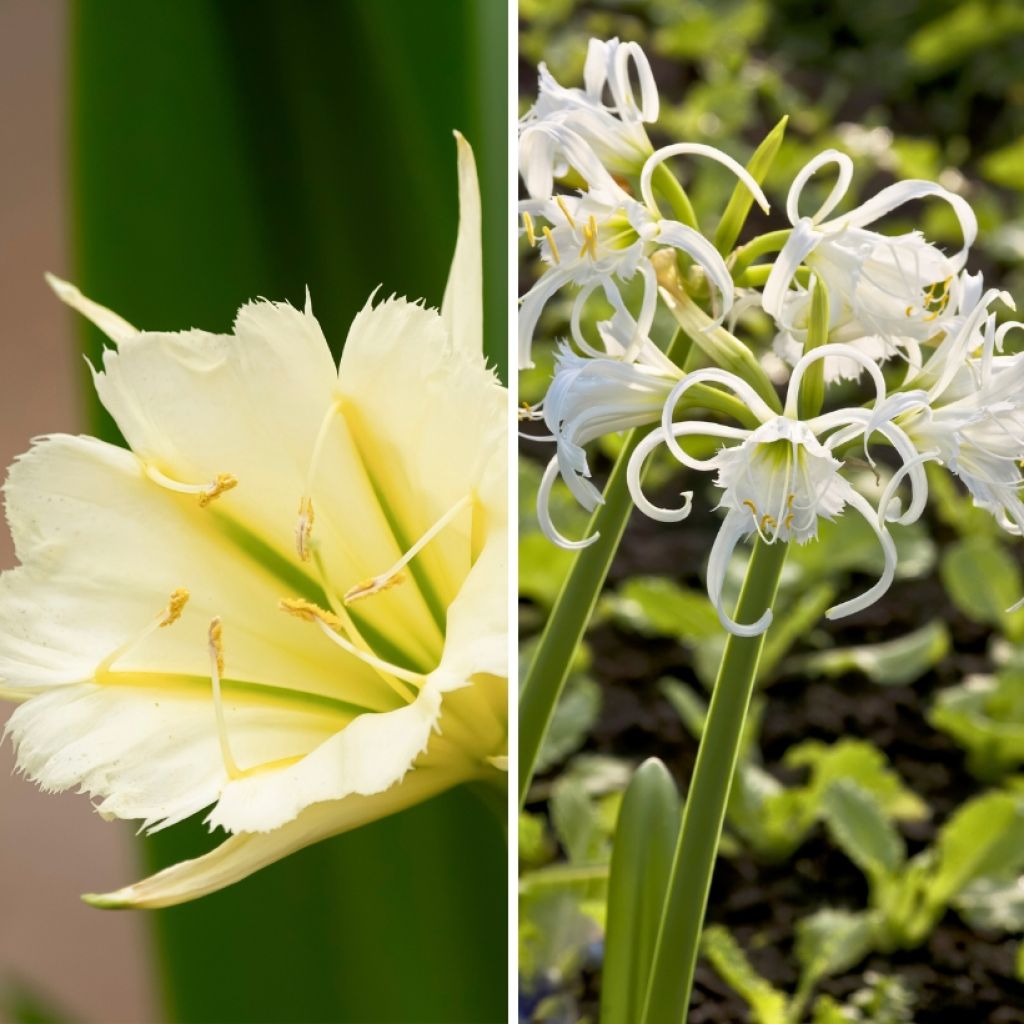

Duo Ismenes
Duo Ismenes
Hymenocallis Blanche, Sulphur Queen
This item cannot be shipped to the selected country
Delivery charge from €5.90
More information
Schedule delivery date,
and select date in basket
This plant carries a 6 months recovery warranty
More information
We guarantee the quality of our plants for a full growing cycle, and will replace at our expense any plant that fails to recover under normal climatic and planting conditions.
From €5.90 for pickup delivery and €6.90 for home delivery
Express home delivery from €8.90.
Does this plant fit my garden?
Set up your Plantfit profile →
Collection items (2 plants)
Description
The Ismenes Duo, comprised of the Ismene festalis 'Blanche' and the Ismène 'Sulphur Queen', provides a stunning summer display with its exotic and alluring flowers. These Hymenocallis varieties are known for their large fragrant blooms: pristine white for the Ismene festalis and sultry sulfur yellow for the Ismène 'Sulphur Queen'. Their lush, lance-shaped foliage, with its deep green and glossy appearance, forms a rich basal cluster from which emerge exquisitely elegant flowers carried on long stems. These bulbous plants, boasting an upright and graceful habit, can grow up to 60 cm in height and can tolerate brief frosts of around -5°C. Flourishing in rich, well-drained, neutral, or slightly acidic soil, which remains moist from spring to autumn, they are often best cultivated in pots, allowing you to keep them close at hand and enjoy their beauty and fragrance.
Description of Individual Varieties in the Duo:
-
x 1 Ismene festalis 'Blanche': This variety is characterised by its radiant and pure white flowers, reminiscent of exotic stars. Its delicate fragrance and summer blooming make it an enchanting choice for romantic gardens and floral arrangements.
-
x 1 Ismène 'Sulphur Queen': With its sulphur yellow blossoms, this variety adds a touch of warm and vibrant colour to any setting. The flowers exude a faintly spicy fragrance.
Planting and Care Instructions:
Spring is the optimal season for planting the Duo Ismenes. These bulbs thrive in sunny locations in the garden or on the terrace. They can be planted in flowerbeds, borders, and especially in large pots that will be shielded during winter. To achieve a cohesive and colourful effect, we recommend planting them in clusters, spacing each plant about 20 to 30 cm apart. Plant the bulbs at a depth of 10 to 15 cm. Given their similar stature, these varieties can be arranged without considering height, creating a harmonious mass effect. For a dense and vibrant display, plan for 6 to 8 plants per square metre.
Companion Planting Suggestions:
The Duo Ismenes pairs harmoniously with Agapanthus 'Blue Triumphator', whose blue flowers provide a striking contrast to the white and yellow blooms of the Ismenes. Consider placing the latter in the background for added depth. Additionally, Lavenders 'Hidcote' offer both fragrance and complementary colour and can be positioned in the foreground. Mix in Salvia 'Caradonna' with its violet floral spikes to create an effect of varied colours and textures.
Report an error about the product description
Plant habit
Flowering
Foliage
Botanical data
Hymenocallis
Blanche, Sulphur Queen
Amaryllidaceae
Hymenocallis
Cultivar or hybrid
Other Ismene
Planting and care
Plant your Ismene bulbs after the last frost, in a sunny location, at a depth of 10-15 cm, spacing them 10 to 30 cm apart. The soil should be deeply worked and enriched with compost. Throughout the growing season, the plant should not lack water, but the soil should not be waterlogged either. Ismenes are sensitive to frost. In coastal, Mediterranean, or very mild oceanic areas, you can leave the bulbs in the ground, taking care to mulch them. In cold regions, the bulbs should be dug up in autumn before the first frosts and stored in a cool, dry place. You can also grow them in pots (1 bulb per 15 cm pot, with the top of the bulb just above the soil) in good quality compost that you regularly fertilise, and tqke the pots outdoors at the end of spring, protecting them from frost in winter. They multiply spontaneously by producing bulblets near the mother bulb.
Planting period
Intended location
Care
This item has not been reviewed yet - be the first to leave a review about it.
Bulbs to grow in pots
Haven't found what you were looking for?
Hardiness is the lowest winter temperature a plant can endure without suffering serious damage or even dying. However, hardiness is affected by location (a sheltered area, such as a patio), protection (winter cover) and soil type (hardiness is improved by well-drained soil).

Photo Sharing Terms & Conditions
In order to encourage gardeners to interact and share their experiences, Promesse de fleurs offers various media enabling content to be uploaded onto its Site - in particular via the ‘Photo sharing’ module.
The User agrees to refrain from:
- Posting any content that is illegal, prejudicial, insulting, racist, inciteful to hatred, revisionist, contrary to public decency, that infringes on privacy or on the privacy rights of third parties, in particular the publicity rights of persons and goods, intellectual property rights, or the right to privacy.
- Submitting content on behalf of a third party;
- Impersonate the identity of a third party and/or publish any personal information about a third party;
In general, the User undertakes to refrain from any unethical behaviour.
All Content (in particular text, comments, files, images, photos, videos, creative works, etc.), which may be subject to property or intellectual property rights, image or other private rights, shall remain the property of the User, subject to the limited rights granted by the terms of the licence granted by Promesse de fleurs as stated below. Users are at liberty to publish or not to publish such Content on the Site, notably via the ‘Photo Sharing’ facility, and accept that this Content shall be made public and freely accessible, notably on the Internet.
Users further acknowledge, undertake to have ,and guarantee that they hold all necessary rights and permissions to publish such material on the Site, in particular with regard to the legislation in force pertaining to any privacy, property, intellectual property, image, or contractual rights, or rights of any other nature. By publishing such Content on the Site, Users acknowledge accepting full liability as publishers of the Content within the meaning of the law, and grant Promesse de fleurs, free of charge, an inclusive, worldwide licence for the said Content for the entire duration of its publication, including all reproduction, representation, up/downloading, displaying, performing, transmission, and storage rights.
Users also grant permission for their name to be linked to the Content and accept that this link may not always be made available.
By engaging in posting material, Users consent to their Content becoming automatically accessible on the Internet, in particular on other sites and/or blogs and/or web pages of the Promesse de fleurs site, including in particular social pages and the Promesse de fleurs catalogue.
Users may secure the removal of entrusted content free of charge by issuing a simple request via our contact form.
The flowering period indicated on our website applies to countries and regions located in USDA zone 8 (France, the United Kingdom, Ireland, the Netherlands, etc.)
It will vary according to where you live:
- In zones 9 to 10 (Italy, Spain, Greece, etc.), flowering will occur about 2 to 4 weeks earlier.
- In zones 6 to 7 (Germany, Poland, Slovenia, and lower mountainous regions), flowering will be delayed by 2 to 3 weeks.
- In zone 5 (Central Europe, Scandinavia), blooming will be delayed by 3 to 5 weeks.
In temperate climates, pruning of spring-flowering shrubs (forsythia, spireas, etc.) should be done just after flowering.
Pruning of summer-flowering shrubs (Indian Lilac, Perovskia, etc.) can be done in winter or spring.
In cold regions as well as with frost-sensitive plants, avoid pruning too early when severe frosts may still occur.
The planting period indicated on our website applies to countries and regions located in USDA zone 8 (France, United Kingdom, Ireland, Netherlands).
It will vary according to where you live:
- In Mediterranean zones (Marseille, Madrid, Milan, etc.), autumn and winter are the best planting periods.
- In continental zones (Strasbourg, Munich, Vienna, etc.), delay planting by 2 to 3 weeks in spring and bring it forward by 2 to 4 weeks in autumn.
- In mountainous regions (the Alps, Pyrenees, Carpathians, etc.), it is best to plant in late spring (May-June) or late summer (August-September).
The harvesting period indicated on our website applies to countries and regions in USDA zone 8 (France, England, Ireland, the Netherlands).
In colder areas (Scandinavia, Poland, Austria...) fruit and vegetable harvests are likely to be delayed by 3-4 weeks.
In warmer areas (Italy, Spain, Greece, etc.), harvesting will probably take place earlier, depending on weather conditions.
The sowing periods indicated on our website apply to countries and regions within USDA Zone 8 (France, UK, Ireland, Netherlands).
In colder areas (Scandinavia, Poland, Austria...), delay any outdoor sowing by 3-4 weeks, or sow under glass.
In warmer climes (Italy, Spain, Greece, etc.), bring outdoor sowing forward by a few weeks.

































